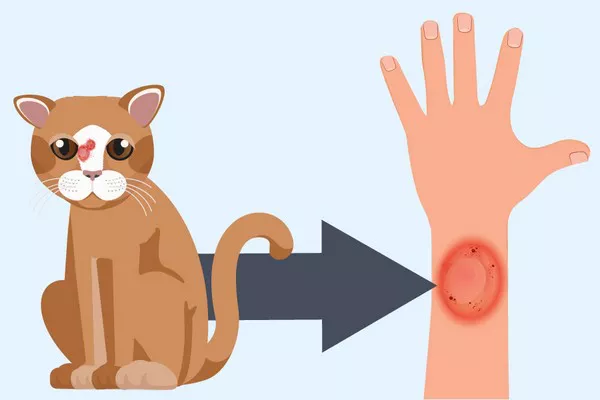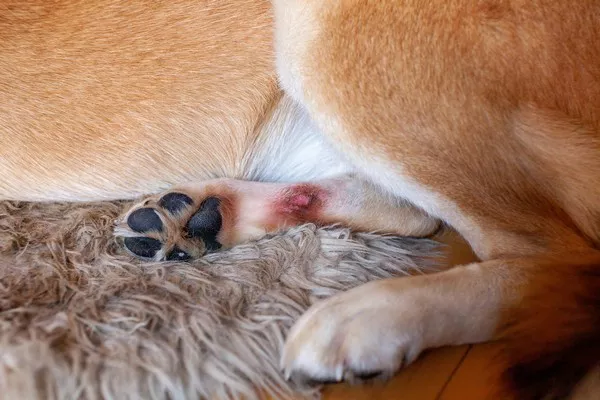Ringworm, despite its name, is not caused by worms at all. Instead, it is a highly contagious fungal infection that can affect the skin, scalp, and nails of both humans and animals. One common misconception is that ringworm primarily originates from cats. While it’s true that cats can indeed carry the fungus responsible for ringworm, understanding the nuances of transmission and prevention is crucial in dispelling myths and effectively managing the condition.
Unveiling the Culprit: What is Ringworm?
Before delving into the relationship between ringworm and cats, it’s essential to understand the nature of this fungal infection. Ringworm is caused by various species of dermatophyte fungi, including Microsporum, Trichophyton, and Epidermophyton. These fungi thrive in warm, moist environments and can infect the skin, hair, and nails of humans and animals.
Contrary to popular belief, ringworm isn’t a life-threatening condition, but it can be highly contagious and may cause discomfort and irritation. Symptoms often include red, itchy, and scaly patches on the skin, along with hair loss in affected areas. In severe cases, ringworm can lead to secondary bacterial infections or complications, particularly in individuals with weakened immune systems.
The Cat Connection: Can Cats Cause Ringworm?
Cats are known carriers of the fungi responsible for ringworm. The most common culprits are Microsporum canis and Microsporum gypseum, although other species may also be involved. These fungi can reside in the fur, skin, or claws of infected cats without causing visible symptoms. As a result, cats can unwittingly transmit the infection to humans and other animals, making them a potential source of ringworm.
It’s essential to recognize that not all cats with ringworm will display obvious signs of infection. Some may exhibit mild symptoms, such as patchy fur or skin lesions, while others may remain asymptomatic carriers. This variability complicates efforts to identify and isolate infected animals, highlighting the importance of proactive measures to prevent transmission.
Transmission Dynamics: How is Ringworm Spread?
Ringworm spreads through direct contact with infected individuals or contaminated surfaces. In the case of cats, close contact with an infected animal, such as petting or grooming, poses the greatest risk of transmission. Additionally, fungal spores shed from infected cats can persist in the environment, contaminating bedding, furniture, and other surfaces.
Humans can also contract ringworm from infected cats through direct contact or by handling contaminated objects, such as brushes or bedding. Furthermore, ringworm can spread from person to person through skin-to-skin contact or by sharing personal items like clothing and towels. Understanding these transmission dynamics is crucial for preventing the spread of ringworm within households and communities.
Myth vs. Reality: Debunking Common Misconceptions
Despite widespread awareness of ringworm, several myths and misconceptions persist regarding its transmission and treatment. One prevalent myth is that cats are the primary source of ringworm in households. While cats can certainly harbor the fungi responsible for the infection, other factors, such as environmental contamination and human-to-human transmission, also play significant roles.
Another misconception is that ringworm is only transmitted through direct contact with infected animals. While close contact with infected cats does increase the risk of transmission, fungal spores can linger in the environment for an extended period, posing a risk to humans and animals alike. As such, thorough cleaning and disinfection of living spaces are essential for preventing the spread of ringworm.
Prevention Strategies: Minimizing the Risk of Ringworm
Effective prevention of ringworm involves a multi-faceted approach that addresses both human and animal factors. Here are some key strategies to minimize the risk of ringworm transmission:
1. Routine Veterinary Care: Schedule regular check-ups for your pets to monitor their health and detect any signs of ringworm or other infections early on.
2. Hygiene Practices: Wash your hands thoroughly after handling animals, especially if you suspect they may be infected. Encourage good hygiene practices among family members, particularly children who may be more susceptible to ringworm.
3. Environmental Management: Clean and disinfect pet bedding, grooming tools, and other surfaces regularly to remove fungal spores. Vacuum carpets and upholstery frequently, paying special attention to areas frequented by pets.
4. Isolation and Quarantine: If you suspect that your cat may have ringworm, isolate them from other pets and household members until they can be examined by a veterinarian. This helps prevent further spread of the infection.
5. Treatment and Control: Consult your veterinarian for appropriate treatment options if your pet is diagnosed with ringworm. Follow their recommendations for medication, topical treatments, and environmental management to effectively control the infection.
Conclusion
Ringworm is a common fungal infection that can affect both humans and animals, including cats. While cats can serve as carriers of the fungi responsible for ringworm, transmission dynamics are complex and involve various factors, including environmental contamination and human-to-human spread.
By understanding the link between ringworm and cats and implementing proactive prevention strategies, individuals can minimize the risk of infection and effectively manage cases when they arise. Through routine veterinary care, good hygiene practices, and environmental management, households can create a safe and healthy environment for both pets and humans alike, reducing the impact of ringworm on overall well-being.
























